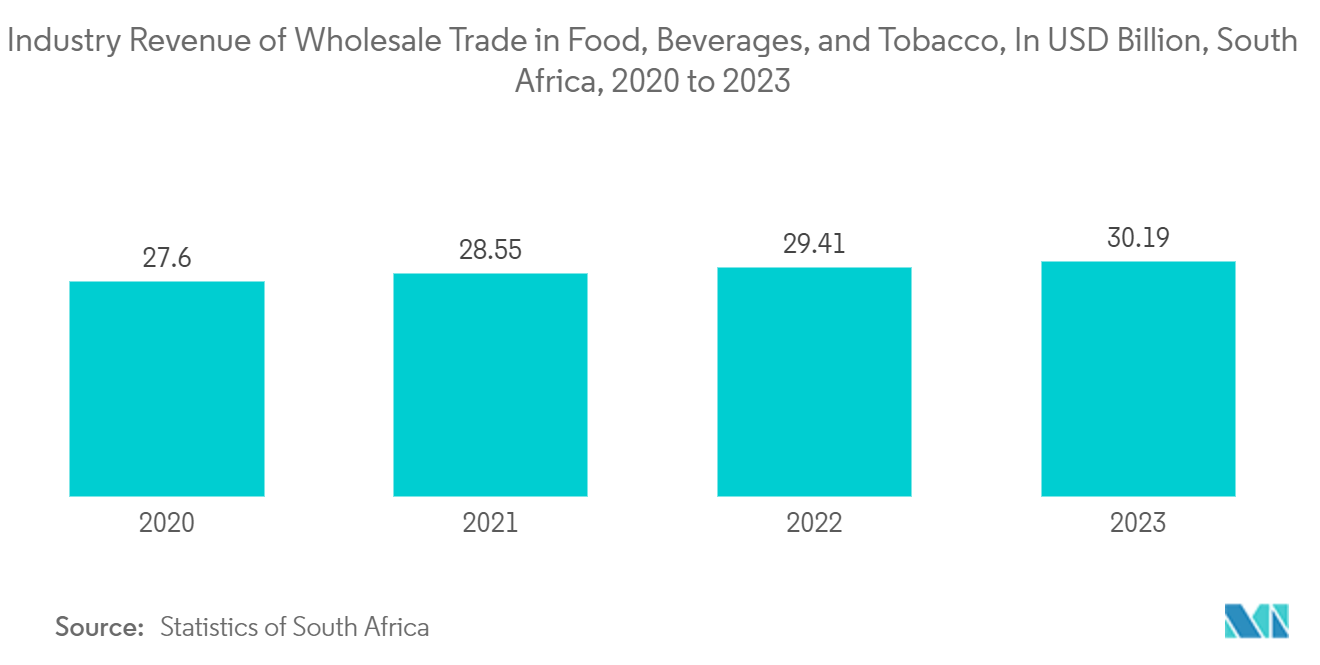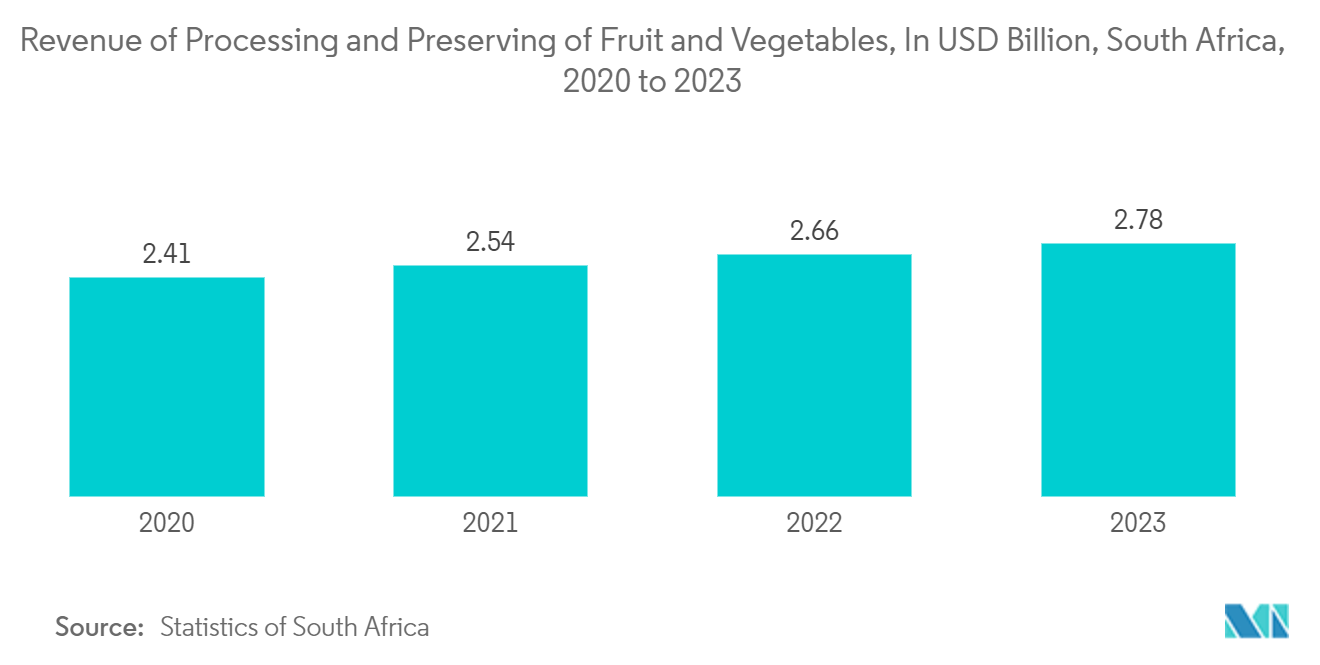Market Trends of South Africa Plastic Packaging Industry
Polyethylene to Witness Growth in the Industry
- Polyethylene is a common type of consumer plastic used in many everyday products. It is a thermoplastic product that can be repeatedly melted into a liquid and cooled back into a solid. Different processing conditions produce different grades of polyethylene, which can be used for various purposes. Polyethylene is generally classified as one of several significant compounds, including LDPE and HDPE.
- Polyethylene is leakproof and impermeable to water vapor and can be heat-sealed. It can be wrapped around the product and fixed with an airtight seal. In addition to protection, it is highly adaptable, offering excellent advertising opportunities to match the product. The material provides a variety of thicknesses and transparencies, as well as a range of designer colors for more customized options.
- According to the Department of Trade, Industry, and Competition of South Africa, while a significant portion of South Africa's domestic consumption relies on locally sourced ethylene, the production levels of PE-LD, PE-LLD, and PE-HD fall short of meeting the nation's needs.
- Despite this, South Africa still finds itself importing polyolefin polymers, mainly grades not produced domestically, to address seasonal shortages and diversify its supplier base. Additionally, the nation imports substantial quantities of both finished and semi-finished plastic products, including those crafted from polymers it exports.
- Furthermore, according to Statistics of South Africa, the revenue from the wholesale trade of food, beverage, and tobacco in 2020 was USD 27.6 billion and reached USD 30.19 billion in 2023. The rise in the wholesale trade of food and beverages in the country would further fuel its plastic packaging industry.

Food Industry in the Country is Anticipated to Witness Growth
- The expanding food industry in the country is driving the growth of the market studied. Mounting consumption of processed and ready-to-eat meals, a surging focus on innovation in the food industry, and soaring demand for processed and packaged food are driving factors. Flexible packaging is one of the widely used plastic types. The rising demand for packaging foods in portable and convenient formats has driven the usage of flexible packaging across industries.
- The South African plastic packaging industry, primarily driven by the food segment, is witnessing robust growth. Consumers increasingly prioritize attributes like cost-effectiveness, sustainability, lightweight design, reusability, recyclability, convenience, and heat resistance in their packaging choices. This rise in demand, especially for portable and convenient food formats, is fueling the adoption of plastic packaging in the food industry and across diverse industries.
- The country is poised to witness a surge in demand for fresh food packaging in the upcoming years. This uptick is primarily fueled by escalating household expenditures, which, in turn, are bolstering the appetite for convenient food products.
- According to the Statistics of South Africa, the revenue from processing and preserving fruit and vegetables in 2020 was USD 2.41 billion, which reached USD 2.78 billion in 2023. The rise in the revenue from processing and preserving fruits and vegetables is expected to drive the market demand for plastic packaging in the country.
- Key players in the South African plastic packaging industry include Huhtamaki, specializing in sustainable packaging solutions. Its product range spans beverages, catering, retail, and, notably, fresh foods. The company's molded fiber designs for egg and fruit packaging underscore the brand's commitment to robust, sustainable, and secure packaging solutions, amplifying the appeal of fresh food offerings by the business.


